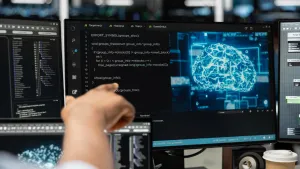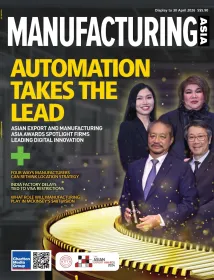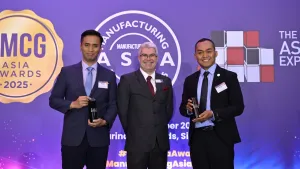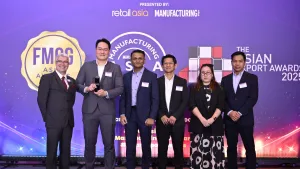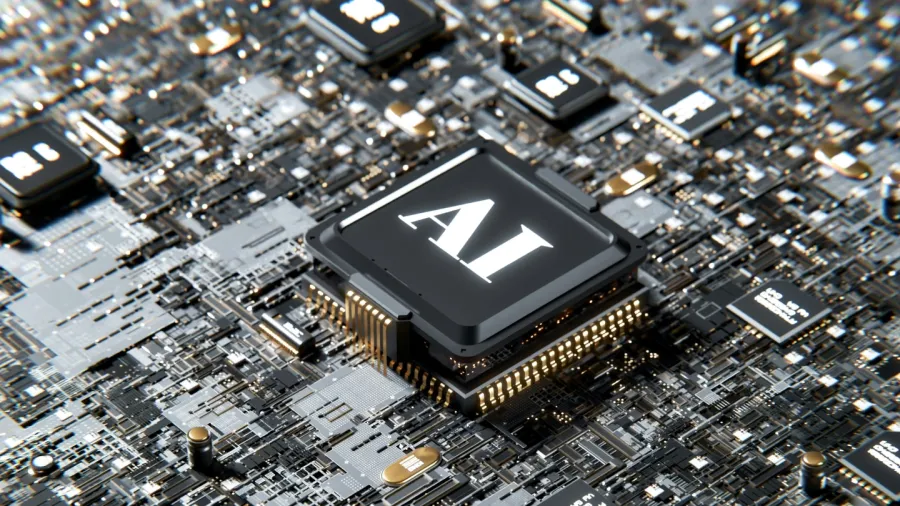
AI ethics debate spurs IP rights discussion in design manufacturing
Industry experts from Dassault Systèmes say human creativity is irreplaceable.
The relationship between artificial intelligence (AI) and manufacturing emerges as a cornerstone of economic growth and technological advancement, especially at a time like Industry 4.0. PwC’s projections indicate a substantial increase in the sector's gross domestic product (GDP) contribution by over 10% by 2030, with China poised to lead with a projected $2.5t GDP gain owing to its robust manufacturing industry and AI investments.
Interviewed by Manufacturing Asia, Shrikanth Savant, director of Data Analysis and Science at Dassault Systèmes, said it is essential to understand the intricate dynamics of this fusion and the crucial role it plays in what’s known as Industry 4.0, a time marked by the digital revolution in manufacturing.
PwC’s long-term forecast projects China leading the charge as the manufacturing sector’s overall contribution is estimated to run over 10% by 2030. This growth is attributed to China’s robust manufacturing industry and substantial investments in AI technology.
“We develop these tools that will help manufacturing design get better. So it’s not necessarily doing the task for them completely; it’s just reducing the tedium in the design process — as design is a fairly complex process,” said Savant. “And if we can integrate AI so that we can further reduce the tedium, I think this is something we would focus on working.”
Building on the discussion of AI’s impact on manufacturing, the concept of generative design represents the cutting edge of innovation. Although still in its nascent stages, this approach synthesises user input with AI capabilities, empowering users to achieve their design goals at unprecedented speed and precision.
Savant also highlighted the beauty of AI’s role within 3D software platforms, saying that it acts as a supportive design assistant that streamlines the intricate process of designing without usurping user control.
Also, central to this integration is the respectful treatment of data. Dassault Systèmes prioritises the development of AI models trained on proprietary data, ensuring customisation to meet user needs whilst respecting privacy and intellectual property rights.
The fourth industrial revolution
Jasmeet Singh, executive vice president, global head of manufacturing and chair of Infosys Public Services and Infosys Automotive GmbH, wrote in his piece for the World Economic Forum (WEF) that the synergy between AI technologies and manufacturing is undeniable, with the manufacturing industry emerging as a significant adopter of AI in recent decades.
Manufacturers utilise collaborative robots (‘cobots’) alongside humans to boost productivity and safety. AI technologies enable cobots to perform diverse tasks like quality inspections and packaging. Machine learning and Big Data analytics ensure autonomous planning for supply chains, optimising throughput and meeting deadlines.
AI-driven monitoring of machinery predicts and prevents breakdowns, improving productivity. Automated testing and quality control processes detect defects, whilst generative AI speeds up product innovation.
Despite challenges like operational mismatches and data issues, addressing these barriers can unlock AI’s transformative potential in manufacturing, enhancing efficiency and driving significant benefits.
Hype versus reality
In a media forum at the 25th 3DEXPERIENCE World in Dallas, Gian Paolo Bassi, senior vice president of 3DEXPERIENCE Works and customer role experience at Dassault Systèmes, and Manish Kumar, chief executive officer of SOLIDWORKS, shed light on the nuanced understanding needed to discern between AI hype and tangible advancements in CAD technologies.
“Because of ChatGPT, people have concluded that AI is the same as generative AI. To me that is a misconception,” Kumar told the press.
Kumar stressed that whilst generative AI garners significant attention, it represents only a segment of the broader AI landscape. He explained this distinction by recalling historical applications of AI in mundane tasks such as text recognition for postal services and highlighted the diverse functionalities encapsulated within the AI spectrum.
Moreover, Manish and his colleagues pointed out that the integration of AI into CAD software predates the current hype cycle. SOLIDWORKS, for instance, has been incorporating AI features for several years – 25 to be exact – including predictive commands and sketch auto-selection capabilities.
However, it was the recent surge in interest surrounding AI — catalysed in part by advancements in generative AI and large language models like ChatGPT — that brought these capabilities to the forefront of industry discourse.
Concerns about AI replacing human creativity were addressed, with a consensus emerging that whilst AI excels at data processing and pattern recognition, it cannot replicate the imaginative capacity unique to humans.
“Machines are very good at pattern recognition and transforming information from one place to another without changes, because humans are a disaster in a sense. If I tell you something and repeat that to another person, information could get lost,” explained Kumar.
A thought brought up during the discussion was the potential societal damage of overly relying on AI’s capabilities and overstepping one’s intellectual property (IP).
“We don’t see AI to give your users the final solution. AI will give multiple different ways or ideas to meet their specific needs. And when they try to evolve those ideas, they become copyright-protected or patentable, for that matter,” Kumar said.
“There is a philosophical aspect to the question: could AI become so dangerous to create reality? We have, at our disposal, technologies that wouldn’t be more dangerous than AI. Even if it does become dangerous, we are still able to contain it. I think the answer is always the same: it is the way we use technology,” Bassi reassured.
The work of SOLIDWORKS
SOLIDWORKS, with its focus on small to medium-sized businesses, democratises access to advanced design tools. Savant identifies makers and hobbyists as a burgeoning market segment, empowered by affordable licences and comprehensive solutions offered by SOLIDWORKS.
This approach ensures that users not only benefit from AI-driven efficiencies but also retain control over design parameters, enabling seamless integration into real-world manufacturing processes. “And if you wanted to scale it up or scale it down, you can make certain modifications. So our focus has always been to use AI in generative parametric CAD models where you can use whatever technology you use,” said Savant.
Whilst AI has streamlined the conversion of images into 3D models, the prevailing challenge lies in the resultant meshes needing more manipulable dimensions. This underscores a steadfast commitment to empowering users with editable, manufacturable designs, ensuring practical utility in day-to-day manufacturing endeavours.
“It’s not just like fluff that we want to provide to the user, just for the sake of things. We aim to provide real value to the user that people can use in their day-to-day lives in manufacturing,” Savant concluded.
Looking towards the future, Savant acknowledges the potential of AI-driven advancements to revolutionise the design landscape. Whilst regional disparities and cultural factors may influence adoption, Dassault Systèmes remains vigilant and committed to addressing emerging challenges proactively.
Although manufacturers should not be too quick on their toes to jump straight into AI, PwC warns of this two-faced outcome. “AI is both a powerful source of disruption and a tool to gain competitive advantage. Manufacturing firms that fail to recognise the importance of AI are likely to lose their competitive edge,” a PwC report titled “An introduction to implementing AI in manufacturing” stated.
However, the consulting firm has indicated that businesses that have put the most effort into digitalising their core processes have led to AI adoption. Therefore, the firm suggests six building blocks for the successful integration of AI into manufacturing: business application, data, technology, talent and organisation, process, and culture.


